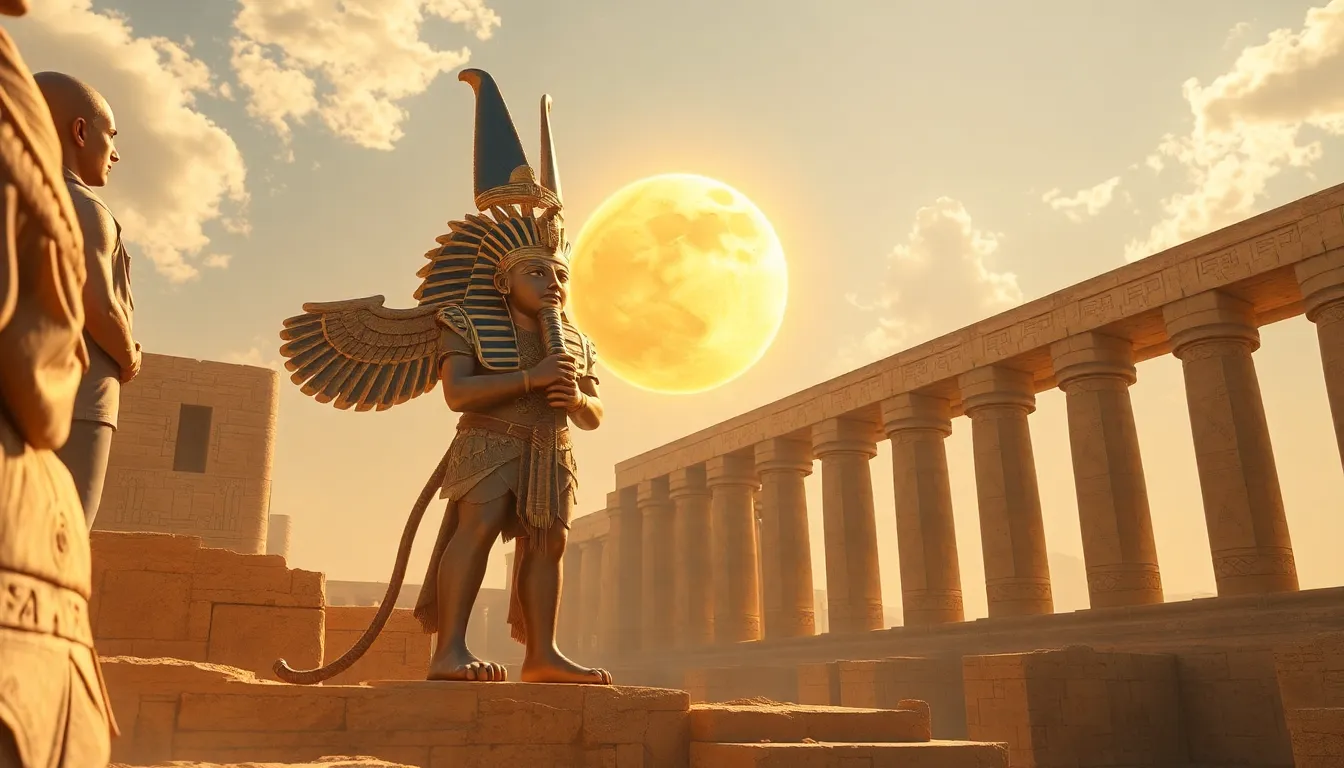Ra and the Sun: Legends That Illuminate Ancient Egyptian Beliefs
I. Introduction
In Ancient Egyptian mythology, Ra stands as the supreme deity who embodies the sun and light. Revered as the Sun God, Ra’s influence permeated various aspects of life in ancient Egypt, shaping not only religious practices but also the cultural and societal frameworks of the civilization. This article delves into the rich tapestry of legends surrounding Ra, exploring their significance and the lessons they imparted to the ancient Egyptians.
II. The Origins of Ra: Myths and Creation Stories
Ra’s origins are rooted in the profound cosmic waters known as Nun, from which he emerged as a radiant being. This emergence marks the beginning of creation in Egyptian mythology. According to various creation myths, Ra is often depicted as the first god to arise from these primordial waters, bringing forth light and order.
Ra’s connection with other deities is also critical in understanding his role in creation myths. He is often associated with:
- Atum: The creator god from whom Ra is believed to have descended.
- Nut: The sky goddess who envelops Ra, helping him in his daily journey.
- Geb: The earth god, with whom Nut shares a sacred relationship.
The symbolism of light and the sun in ancient cosmology is paramount. The sun represented life, growth, and the cyclical nature of existence, serving as a reminder of the divine order that governed the universe.
III. Ra’s Journey Across the Sky
Ra’s daily journey across the sky is a prominent theme in Egyptian mythology. Each day, he rises in the east, travels across the heavens, and ultimately sets in the west. This journey is divided into three significant phases:
- Dawn: Ra’s birth at sunrise symbolizes rebirth and renewal.
- Noon: The zenith of Ra’s power represents strength and vitality.
- Dusk: Ra’s descent into the underworld signifies the cyclical nature of life and death.
Ancient texts and art depict Ra’s journey vividly, illustrating his solar barque, which he navigates across the sky, often accompanied by other deities who assist him in overcoming obstacles along the way.
IV. Ra’s Role in the Egyptian Pantheon
As the king of the gods, Ra holds a position of immense authority within the Egyptian pantheon. His relationships with other deities, such as:
- Osiris: The god of the afterlife and resurrection.
- Isis: The goddess of magic and motherhood.
- Horus: The falcon-headed god, often associated with kingship.
highlight Ra’s significance in maintaining cosmic order. Additionally, Ra’s fusion with other deities, such as Amun-Ra, illustrates his adaptability and enduring influence, merging with local gods to become a central figure in various religious practices.
V. Legends of Ra’s Conflicts and Triumphs
Among the most compelling legends is the myth of Ra’s eternal struggle against the serpent Apep (Apophis), who embodies chaos and darkness. Ra’s battles against Apep are not just physical confrontations but symbolize the ongoing conflict between order and chaos. These tales reinforce the moral and cosmic order that the ancient Egyptians held dear.
Ra’s triumphs serve as powerful allegories, illustrating that light and goodness ultimately prevail over darkness and evil. The significance of these legends resonates through the ages, emphasizing the importance of resilience and virtue in the face of adversity.
VI. Ra in Funerary Practices and Afterlife Beliefs
Ra’s influence extends into funerary practices and beliefs surrounding the afterlife. The ancient Egyptians believed that Ra guided the deceased through the underworld, ensuring their safe passage into the afterlife. Key texts like the Book of the Dead contain numerous references to Ra, highlighting his role as a protector and guide.
Temples and rituals dedicated to Ra were integral to the afterlife beliefs of the Egyptians. The daily rituals performed in Ra’s honor, particularly at sunrise, were thought to ensure the continuity of life and the favor of the gods for the deceased.
VII. Cultural Legacy of Ra in Ancient Egyptian Society
Ra’s cultural legacy is profound, influencing art, architecture, and literature throughout ancient Egypt. His image is often depicted in temple reliefs, sculptures, and paintings, symbolizing power and divinity. Festivals and celebrations honoring Ra, such as the Wepet-Renpet (the opening of the year), were essential in marking the cycles of life and the agricultural calendar.
Furthermore, the adaptation of Ra’s worship in later cultures highlights his enduring significance. The Romans and Greeks, for instance, recognized Ra’s power, integrating aspects of his worship into their own belief systems.
VIII. Conclusion
In summary, Ra’s significance in Ancient Egyptian beliefs is monumental, shaping the spiritual and cultural landscape of one of history’s most fascinating civilizations. His legends, rich with symbolism and moral lessons, reflect the ancient Egyptians’ reverence for the sun and the cycles of life. Today, Ra’s legacy endures, offering insights into the values and beliefs that defined ancient societies. Myths like those of Ra not only illuminate our understanding of past civilizations but also remind us of the universal themes that connect humanity across time.




